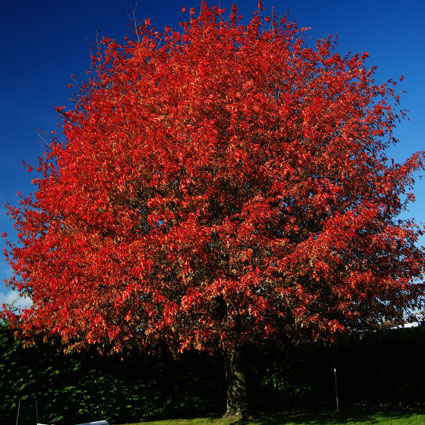
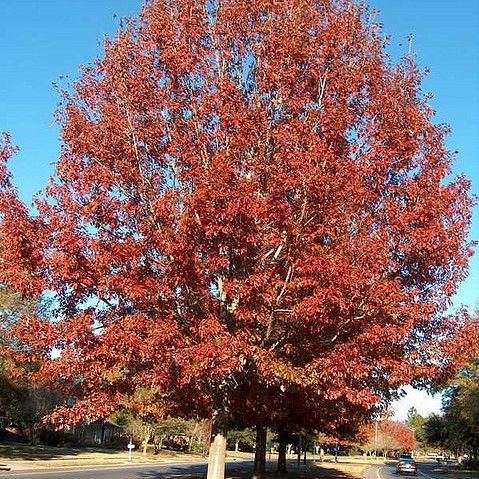
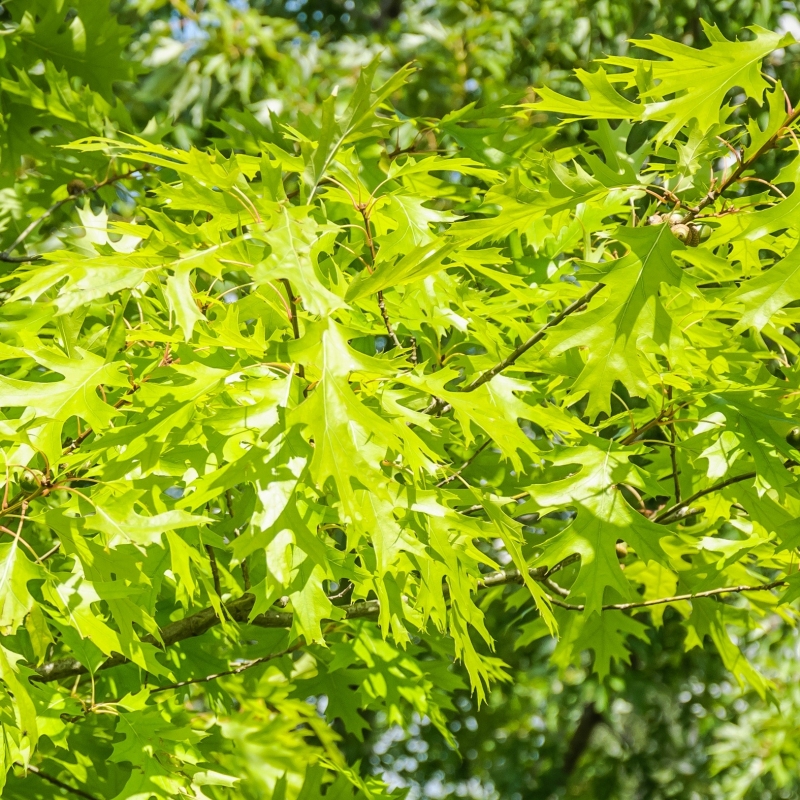
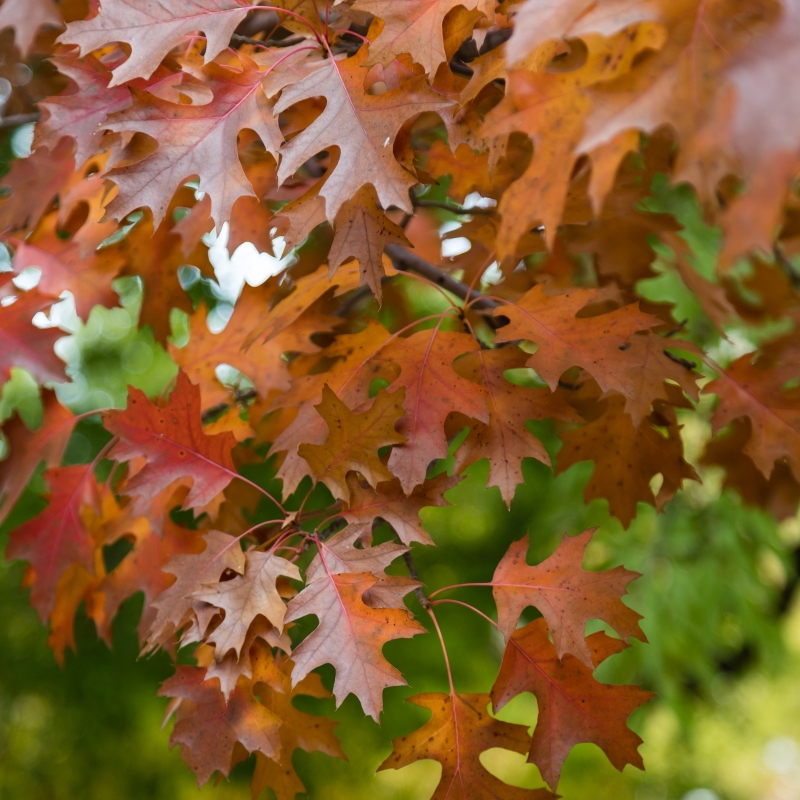
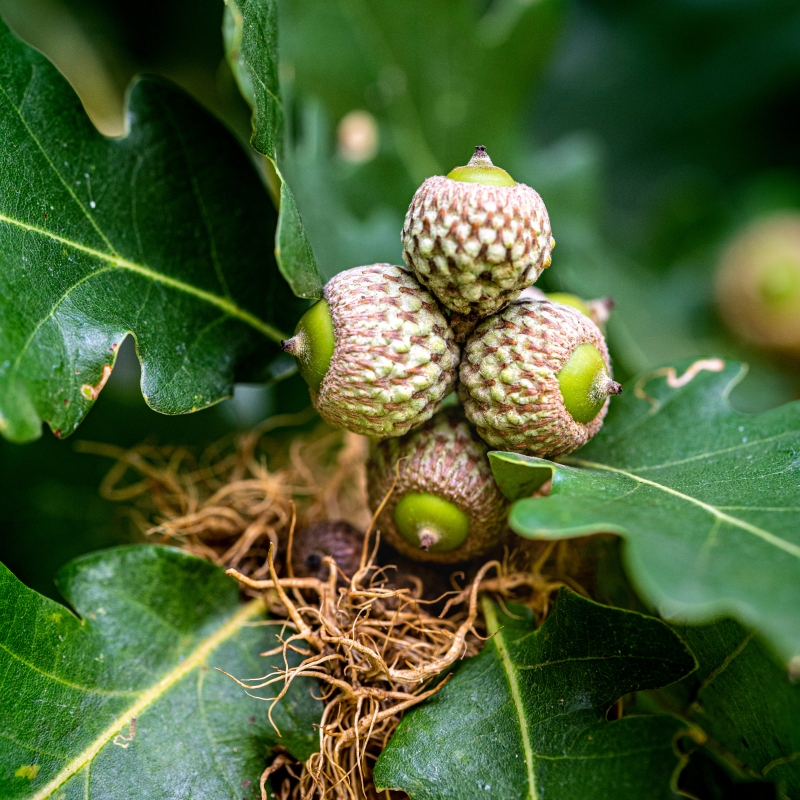
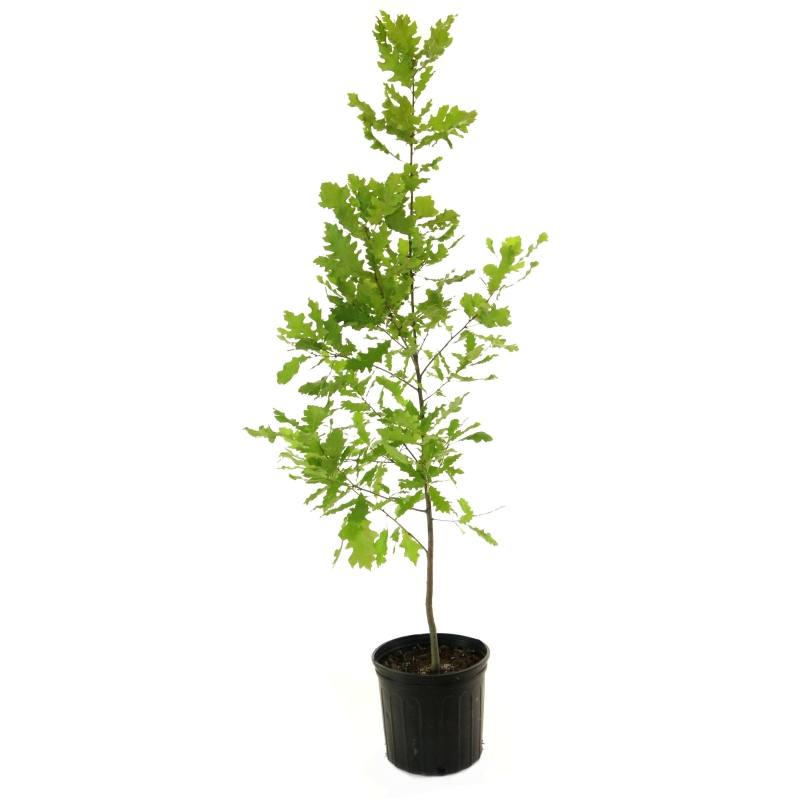
Shumard Oak Tree
Quercus shumardii Shumard Oak
88 reviews
Shumard Oak Tree
Quercus shumardii Shumard Oak
88 reviews
- Beautiful red foliage in the fall
- Tolerant of a variety of soil conditions
- Provides excellent shade and wildlife habitat
- Recommended by landscape designers for optimal fit in real yards
$112.00
$160.00
30% Off
- Ships to in 3-5 Days
- Free Shipping Over $150
- Plant Arrival Guarantee
- In Stock
- Free Plant Consult
$200 - Landscape-Approved: Every Plant We Sell Comes With Design Expertise Behind It
- Trade 3 Gallon
- 3.5 Gallon
We are sorry, product is currently out of stock due to seasonal availability. Please check the "Related plants available in your area" section below
Not just beautiful - intentionally selected by ShrubHub's 3D landscape design team to fit real-world spaces and maximize yard potential.
Why Shumard Oak Tree?
The Shumard Oak tree, also known as Quercus shumardii, is a large, deciduous tree native to North America. Known for its beautiful red autumn foliage, this tree can grow up to 100 feet tall and has a broad spread. It is often planted for its shade and ornamental value in parks and landscapes. The acorns produced by the Shumard Oak tree are an important food source for wildlife.
Sunlight
Shumard Oak trees require full sun, meaning they need at least 6 hours of direct sunlight daily to thrive and grow properly. Insufficient sunlight can lead to stunted growth, poor health, and decreased overall resilience to pests and diseases.
Watering
Shumard Oak trees prefer well-drained soil and require regular watering, especially during hot, dry periods. It is important to keep the soil consistently moist, but not waterlogged. Young trees may need more frequent watering until they are established.
Fertilizing
Shumard Oak trees require a well-balanced fertilizer with a slow-release formula that is high in nitrogen, phosphorus, and potassium. Fertilizer should be applied in the spring to promote healthy growth and development. Avoid over-fertilizing as it can cau
Shumard Oak Tree (Quercus shumardii)
The Shumard Oak tree, scientifically known as Quercus shumardii, is a medium to large deciduous tree native to North America. It is a popular landscaping choice due to its beautiful foliage and hardy nature.
Features:
- This oak tree typically reaches heights of 40-60 feet, with a spread of 30-50 feet, creating a stately and majestic presence in any landscape.
- The leaves of the Shumard Oak are large, lobed, and glossy green, turning vibrant shades of red, orange, and yellow in the fall.
- It produces acorns that are a valuable food source for wildlife such as squirrels, deer, and birds.
- The bark of the Shumard Oak is dark brown and furrowed, adding visual interest to the tree's trunk.
Growing Conditions:
- This tree thrives in full sun and moist, well-drained soil, but is adaptable to a variety of soil types.
- It is tolerant of urban pollution, making it a great choice for street planting or city landscapes.
- The Shumard Oak is hardy in USDA zones 5-9, making it suitable for a wide range of climates.
Uses:
- Shumard Oak trees are commonly planted as shade trees in parks, residential yards, and along streets.
- They also provide habitat and food for a variety of wildlife, making them a valuable addition to natural areas.
- The wood of the Shumard Oak is strong and durable, used in building construction and furniture making.
Overall, the Shumard Oak tree is a versatile and attractive tree that adds beauty and value to any landscape.
Plant Information:
| Botanical Name: | Quercus shumardii Shumard Oak |
| USDA Zones: | 5 - 9 |
| Mature Height: | 60 FT |






Pollination Info
Shumard Oak Tree (Quercus shumardii)
The Shumard Oak tree is a large deciduous tree native to North America. It is known for its beautiful fall foliage and its ability to attract wildlife. One important aspect of the Shumard Oak tree is its pollination process.
Pollination of Shumard Oak Tree:
The Shumard Oak tree is a monoecious species, meaning it has both male and female reproductive organs on the same tree. The male flowers, known as catkins, produce pollen which is then carried by the wind to the female flowers for pollination.
Although Shumard Oak trees are primarily wind-pollinated, bees and other insects may also play a role in pollination by transferring pollen between flowers. This can increase genetic diversity and improve the chances of successful fertilization.
After pollination, the female flowers develop into acorns which are a valuable food source for wildlife such as squirrels, deer, and birds.
Importance of Pollination:
Pollination is essential for the reproduction of Shumard Oak trees and the production of acorns. Without proper pollination, the tree may not produce seeds, leading to a decline in population and biodiversity. Pollination also plays a crucial role in maintaining healthy ecosystems by providing food and habitat for various wildlife species.
FAQ
Shumard Oak Tree (Quercus shumardii)
Welcome to our FAQ section about the Shumard Oak Tree. Here, you'll find answers to common questions about this species of oak tree.
What is a Shumard Oak Tree?
The Shumard Oak Tree, scientifically known as Quercus shumardii, is a species of oak tree native to North America. It is a large deciduous tree that can grow up to 80 feet tall and is known for its beautiful fall foliage.
Where does the Shumard Oak Tree grow?
Shumard Oak Trees are primarily found in the southeastern United States, including states like Texas, Oklahoma, and Louisiana. They prefer well-drained soils and can be found in a variety of habitats, from river bottoms to upland forests.
What are the characteristics of a Shumard Oak Tree?
Shumard Oak Trees have dark green leaves that turn a vibrant red or orange color in the fall. They produce acorns that are a valuable food source for wildlife, such as deer and squirrels. The bark of the tree is dark and fissured, adding to its overall ornamental appeal.
How do I care for a Shumard Oak Tree?
Shumard Oak Trees are relatively low-maintenance once established. They prefer full sun and well-drained soil. Regular watering and occasional fertilization can help promote healthy growth. Pruning may be necessary to maintain a desired shape or size.
Are Shumard Oak Trees susceptible to any diseases or pests?
Like many oak trees, Shumard Oak Trees can be susceptible to diseases such as oak wilt and pests like oak borers. Proper care, including regular inspections and appropriate treatments, can help prevent or mitigate these issues.
When is the best time to plant a Shumard Oak Tree?
The best time to plant a Shumard Oak Tree is in the early spring or fall, when temperatures are milder and the tree has a chance to establish its roots before the extremes of summer or winter. Make sure to provide adequate water and protection from harsh weather conditions during the first few years of growth.
Planting & Care
Planting and Care for Shumard Oak Tree
Planting:
- Choose a sunny location with well-drained soil for planting the Shumard Oak tree.
- Dig a hole that is twice as wide and just as deep as the root ball of the tree.
- Place the tree in the hole and backfill with soil, firming it gently as you go to remove air pockets.
- Water the tree thoroughly after planting to help settle the soil.
Care:
- Water the tree regularly, especially during the first few years after planting to help establish a strong root system.
- Mulch around the base of the tree to help retain moisture and suppress weeds.
- Prune the tree as needed to remove dead or damaged branches and shape the canopy.
- Fertilize the tree in the spring with a slow-release fertilizer formulated for oak trees.
- Monitor the tree for pests and diseases, and treat any issues promptly to maintain the tree's health.
With proper planting and care, the Shumard Oak tree can provide years of beauty and shade in your landscape.
Check Out These Verified Customer Reviews:
Customer Reviews
4.8 out of 5 based on 88 reviews
Thank you! Your review has been submitted.
I am extremely satisfied with the Quercus, Oak 'Shumard' T3G tree. It is healthy and thriving in my yard.
Beautiful tree, great condition
Fast shipping, well-packed
Item has been added to your cart.


